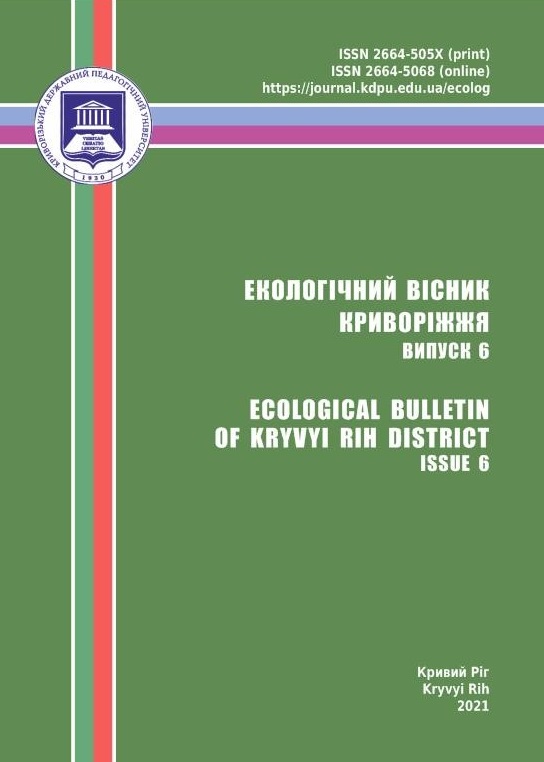FORMATION OF PHYSICAL COMPETENCIES OF STUDENTS IN RESEARCH TASKS
DOI:
https://doi.org/10.31812/eco-bulletin-krd.v6i0.4570Keywords:
research problems, conductor with current, magnetic field, Hall effect, Hall electromotive force sensorAbstract
Because physics is an experimental science, it is important in its
teaching to provide an opportunity to experimentally study the patterns of
natural phenomena. Physical task is an effective means of teaching physics.
Solving physical problems contributes to the formation of many personal
qualities and competencies of students: the development of practical skills,
logical thinking, the ability to evaluate phenomena, make hypotheses and the
development of creativity.
The purpose of this work was to develop an author’s research problem for
group work (under favorable conditions — class work) in high school on
“Measuring the magnetic field strength using the Hall effect” from setting
research objectives to analyzing its results, and disclosing the peculiarities
of its use.
During the work, experiments were performed with a digital Hall sensor (SS41F
series): the specification of the digital sensor, its principle of operation and
block diagram, the behavior of the sensor in the absence of a magnetic field,
and in the presence.
The SS41f sensor is bipolar, its output has two states — the output opens
in the presence of a magnetic field of one pole and is closed by a magnetic
field of the second pole. Thus, the digital Hall sensor can show the absence or
presence of a magnetic field. It works as a “key” depending on the direction of
the magnetic field. In one direction, “sensor key lock” was recorded, and in the
case of polarity change, “opening” was recorded.
Thus, relatively simple experiments were proposed and performed, paying
attention to the correct execution of the measurement process.
In the course of the proposed research task, students will learn to use a variety
of devices to measure physical quantities, which will allow them to effectively
master certain sections of physics and acquire skills and abilities to use a variety
of physical devices.
Downloads
Metrics
References
2. Liashenko, O. I., Bugailov, O. I., Korshak, Yе. V., Martiniuk, M. T., & Shut, M. I. (2005). Fizyka. Prohramy dlya zahal’noosvitnikh navchal’nykh zakladiv 7–12 klasy [Phisics. Programs for secondary schools 7–12 grades]. Irpin. (in Ukrainian).
3. Manego, S. A., Bumbay, Yu. A., & Chernyi, V. V. (2016). Effekt Kholla: uch.-met. pos. [Hall effect: educational and methodological guide]. Belarusian National Technical University. (in Belarusian).
4. Rybalko, A. V. (2004). Metodolohichnyy pidkhid do klasyfikatsiyi doslidnyts’kykh zadach za yikh dydaktychnymy tsilyamy [Methodological approach to the research tasks’ classification according to their didactic goals]. Visnyk Zhytomyrs’koho pedahohichnoho universytetu [Bulletin of Zhytomyr Pedagogical University], 14, 91–94. (in Ukrainian).
5. Shevchenko, Yu. O. (2010). Osnovy fiziki tverdogo tela: uch. pos [Fundamentals of Solid State Physics: educational guide]. St. Petersburg National Research University of Information Technologies, Mechanics and Optics. (in Russian).
6. Volynets, I. M. (2016). Demonstratsiynyy eksperyment [Demonstrative experiment]. Fizyka v shkolakh Ukrayiny [Physics in Ukrainian schools], 15–16, 30–39. (in Ukrainian).
7. Volovich, G. I. (2004). Integral’nyye datchiki Kholla [Hall effect sensors]. Sovremennaya elektronika [Modern electronics], 12, 26–31. (in Russian).
8. Galatiuk, Yu. M. (2007). Doslidnyts’ka robota uchniv z fizyky [Research work of students in physics]. Osnova: “Triad+”. (in Ukrainian).
9. Galatiuk, Yu. M., Rybalko, A. V., & Tischuk, V. I. (2007). Doslidnyts’ki zadachi z fizyky [Research exercises in physics]. Osnova. (in Ukrainian).
10. Gunko, L. M. (2015). Doslidy ta sposterezhennya u domashnikh zavdannyakh iz fizyky [Experiments and observations in homework in physics]. Phisics, 2, 27–31. (in Ukrainian).
11. Zadnipryanets, I. I. (2011). Suchasni tekhnolohiyi u vykladanni fizyky [Modern technologies in teaching physics]. Kyiv: Shkil’nyy svit. (in Ukrainian).
12. Zadnipryanets, I. I. (2014). Tekhnolohichnyy aspekt doslidnyts’koyi ta proektnoyi diyal’nosti v suchasniy seredniy shkoli [Technological aspect of research and project activities in modern middle school]. Fizychna hazeta [Physical newspaper], 9, 2–5. (in Ukrainian).
13. Losyak, H. (2005). Fizychnyy eksperyment — klyuch do piznannya fizyky [Physical experiment — the key to learning physics]. Phisics, 1. (in Ukrainian).






